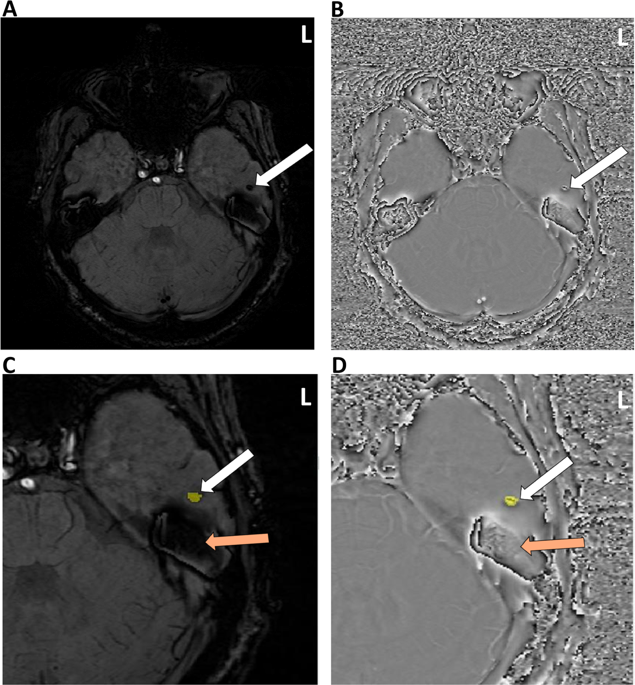Our official English website, www.x-mol.net, welcomes your
feedback! (Note: you will need to create a separate account there.)
Cerebral microbleeds in adult survivors of childhood acute lymphoblastic leukemia treated with cranial radiation.
Scientific Reports ( IF 3.8 ) Pub Date : 2020-01-20 , DOI: 10.1038/s41598-020-57682-8 Nicholas S Phillips 1 , Claudia M Hillenbrand 2 , Bogdan G Mitrea 2 , Jason Yan 3 , Chenghong Li 4 , Matthew A Scoggins 2 , Thomas E Merchant 5 , Gregory T Armstrong 1 , Deokumar Srivastava 4 , Ching-Hon Pui 6 , Leslie L Robison 1 , Melissa M Hudson 1, 6 , Kevin R Krull 1, 7 , Noah D Sabin 2
Scientific Reports ( IF 3.8 ) Pub Date : 2020-01-20 , DOI: 10.1038/s41598-020-57682-8 Nicholas S Phillips 1 , Claudia M Hillenbrand 2 , Bogdan G Mitrea 2 , Jason Yan 3 , Chenghong Li 4 , Matthew A Scoggins 2 , Thomas E Merchant 5 , Gregory T Armstrong 1 , Deokumar Srivastava 4 , Ching-Hon Pui 6 , Leslie L Robison 1 , Melissa M Hudson 1, 6 , Kevin R Krull 1, 7 , Noah D Sabin 2
Affiliation

|
Cranial radiation therapy is associated with white matter-specific brain injury, cortical volume loss, mineralization, microangiopathy and neurocognitive impairment in survivors of childhood acute lymphoblastic leukemia. In this retrospective cross-sectional analysis, neurocognitive testing and 3 T brain MRI's were obtained in 101 survivors treated with cranial radiation. Small focal intracerebral hemorrhages only visible on exquisitely sensitive MRI sequences were identified and localized using susceptibility weighted imaging. Modified Poisson regression was used to assess the effect of cranial radiation on cumulative number and location of microbleeds in each brain region, and multiple linear regression was used to evaluate microbleeds on neurocognitive outcomes, adjusting for age at diagnosis and sex. At least one microbleed was present in 85% of survivors, occurring more frequently in frontal lobes. Radiation dose of 24 Gy conveyed a 5-fold greater risk (95% CI 2.57-10.32) of having multiple microbleeds compared to a dose of 18 Gy. No significant difference was found in neurocognitive scores with either the absence or presence of microbleeds or their location. Greater prevalence of microbleeds in our study compared to prior reports is likely related to longer time since treatment, better sensitivity of SWI for detection of microbleeds and the use of a 3 T MRI platform.
中文翻译:

用颅脑放射治疗的儿童急性淋巴细胞白血病的成年幸存者脑微出血。
儿童急性淋巴细胞白血病幸存者的颅脑放疗与白质特异性脑损伤,皮质体积减少,矿化,微血管病和神经认知障碍有关。在这项回顾性横断面分析中,在接受颅骨放射治疗的101名幸存者中获得了神经认知测试和3 T脑MRI。使用敏感性加权成像对仅在非常敏感的MRI序列上可见的小局灶性脑出血进行了鉴定和定位。改良的Poisson回归用于评估颅脑辐射对每个大脑区域微出血累积数量和位置的影响,多元线性回归用于评估神经认知结局的微出血,并根据诊断时的年龄和性别进行调整。85%的幸存者中至少存在一种微出血,额叶中的出血频率更高。与18 Gy的剂量相比,24 Gy的辐射剂量具有多个微出血的风险增加了5倍(95%CI 2.57-10.32)。不论是否存在微出血或它们的位置,在神经认知评分上都没有发现显着差异。与以前的报道相比,本研究中微出血的患病率更高可能与治疗以来的时间更长,SWI对微出血的检测灵敏度更高以及使用3 T MRI平台有关。不论是否存在微出血或它们的位置,在神经认知评分上都没有发现显着差异。与以前的报道相比,本研究中微出血的患病率更高可能与治疗以来的时间更长,SWI对微出血的检测灵敏度更高以及使用3 T MRI平台有关。不论是否存在微出血或它们的位置,在神经认知评分上都没有发现显着差异。与以前的报道相比,本研究中微出血的患病率更高可能与治疗以来的时间更长,SWI对微出血的检测灵敏度更高以及使用3 T MRI平台有关。
更新日期:2020-01-21
中文翻译:

用颅脑放射治疗的儿童急性淋巴细胞白血病的成年幸存者脑微出血。
儿童急性淋巴细胞白血病幸存者的颅脑放疗与白质特异性脑损伤,皮质体积减少,矿化,微血管病和神经认知障碍有关。在这项回顾性横断面分析中,在接受颅骨放射治疗的101名幸存者中获得了神经认知测试和3 T脑MRI。使用敏感性加权成像对仅在非常敏感的MRI序列上可见的小局灶性脑出血进行了鉴定和定位。改良的Poisson回归用于评估颅脑辐射对每个大脑区域微出血累积数量和位置的影响,多元线性回归用于评估神经认知结局的微出血,并根据诊断时的年龄和性别进行调整。85%的幸存者中至少存在一种微出血,额叶中的出血频率更高。与18 Gy的剂量相比,24 Gy的辐射剂量具有多个微出血的风险增加了5倍(95%CI 2.57-10.32)。不论是否存在微出血或它们的位置,在神经认知评分上都没有发现显着差异。与以前的报道相比,本研究中微出血的患病率更高可能与治疗以来的时间更长,SWI对微出血的检测灵敏度更高以及使用3 T MRI平台有关。不论是否存在微出血或它们的位置,在神经认知评分上都没有发现显着差异。与以前的报道相比,本研究中微出血的患病率更高可能与治疗以来的时间更长,SWI对微出血的检测灵敏度更高以及使用3 T MRI平台有关。不论是否存在微出血或它们的位置,在神经认知评分上都没有发现显着差异。与以前的报道相比,本研究中微出血的患病率更高可能与治疗以来的时间更长,SWI对微出血的检测灵敏度更高以及使用3 T MRI平台有关。











































 京公网安备 11010802027423号
京公网安备 11010802027423号